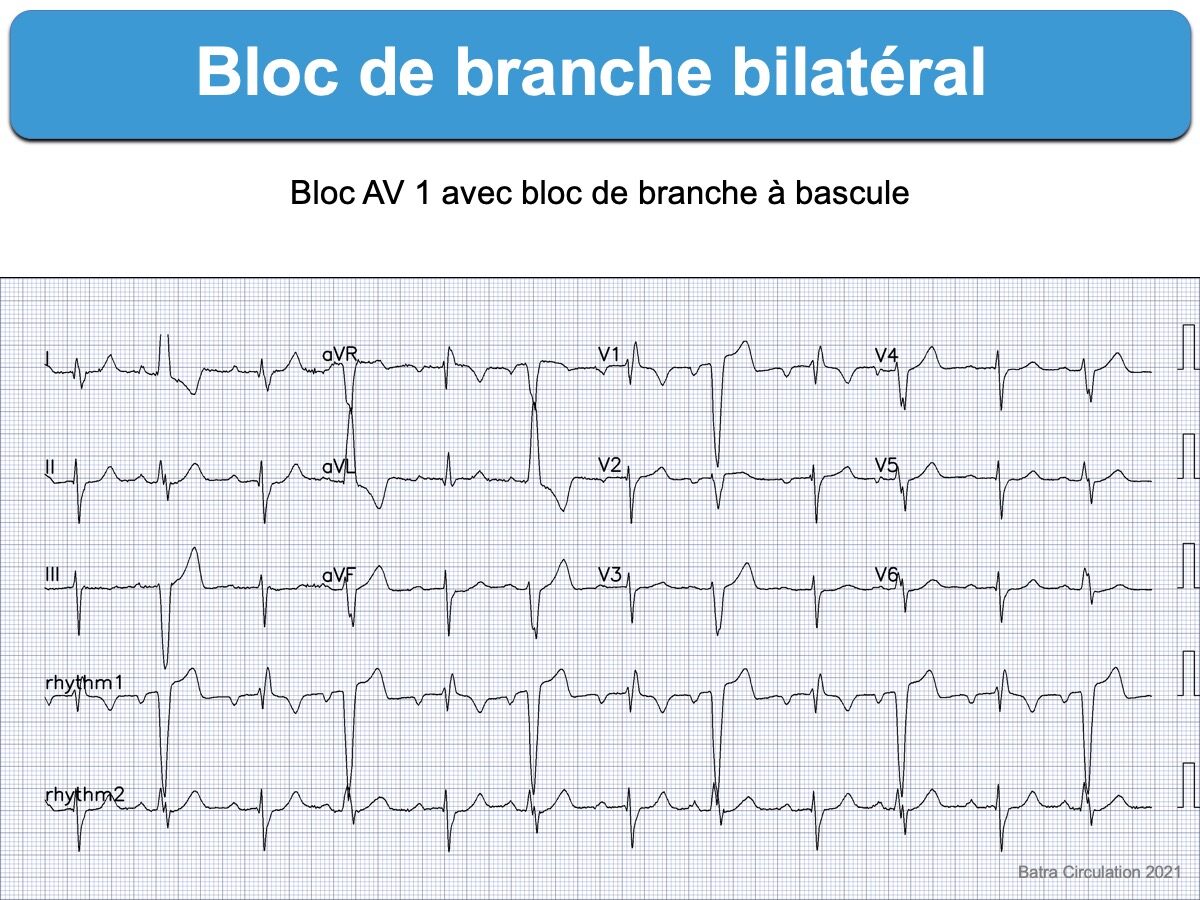Bloc de conduction intraventriculaire qui affecte de façon plus ou moins simultané les trois faisceaux majeurs du faisceau de His (branche droite et faisceaux antérieur et postérieur de la branche gauche).
Cela se manifeste en rythme sinusal (± bloc AV 1 ou 2 associé) ou en FA « lente » par un bloc de branche alternant (ou « à bascule »).
- un bloc de branche droit alternant avec un bloc de branche gauche ;
- un bloc de branche droit associé avec tantôt un bloc fasciculaire antérieur gauche et tantôt un bloc fasciculaire postérieur gauche en alternance ;
- ou par un bloc AV complet intermittent.
Ce bloc trifasciculaire de mauvais pronostic à court terme (risque de syncope…) est une indication à la pose d’un stimulateur cardiaque externe [1][2][3].
Vidéos
- Vidéo cours 4 (64 min).Anomalies de la conduction intracardiaque
- YouTube : les Blocs intraventriculaires
[1] Glikson M, Nielsen JC, Kronborg MB, et al; ESC Scientific Document Group. 2021 ESC Guidelines on cardiac pacing and cardiac resynchronization therapy. Eur Heart J. 2021 Sep 14;42(35):3427-3520. (téléchargeable)
[2] Epstein AE, DiMarco JP, Ellenbogen KA, et al. 2012 ACCF/AHA/HRS focused update incorporated into the ACCF/AHA/HRS 2008 guidelines for device-based therapy of cardiac rhythm abnormalities: a report of the American College of Cardiology Foundation/American Heart Association Task Force on Practice Guidelines and the Heart Rhythm Society. J Am Coll Cardiol. 2013;61(3):e6‐e75. (téléchargeable)
[3] Batra J, Biviano A, Yarmohammadi H. Dancing Bundles With Stable Sinus Rhythm. Circulation. 2022 Jan 4;145(1):84-86. (téléchargeable) –> beat-to-beat alternating bundle-branch blocks. Because of the risk of progression to high-grade atrioventricular block, ECG evidence of alternating bundle-branch blocks is a class I indication for permanent pacing even in the absence of symptoms.2,3 —> Voir diapo 1



